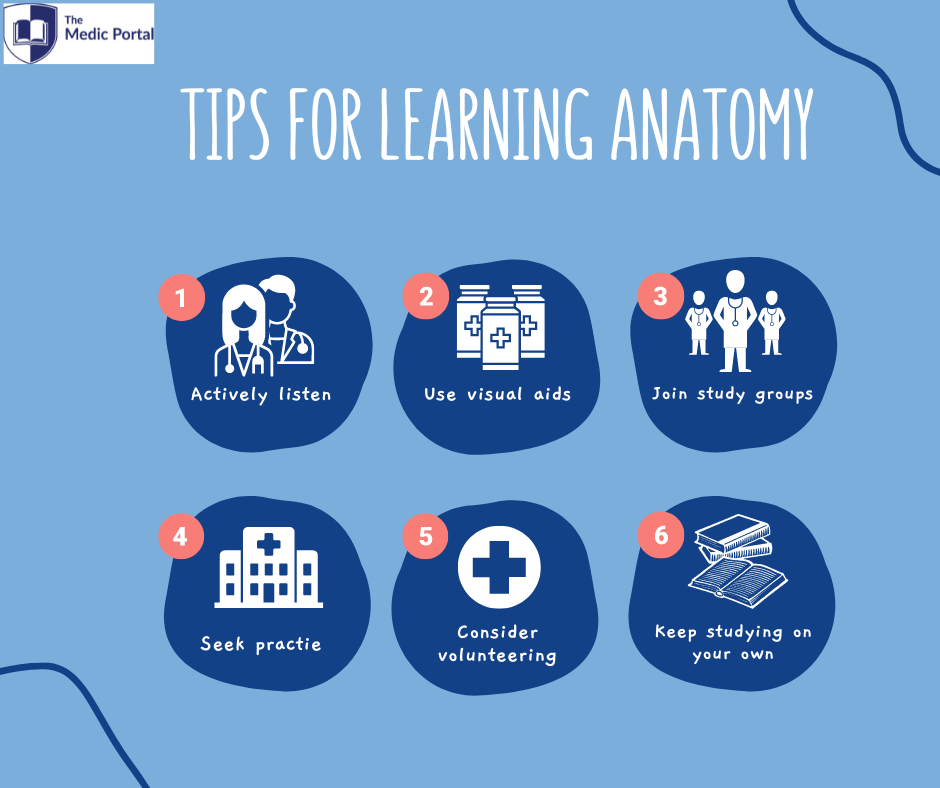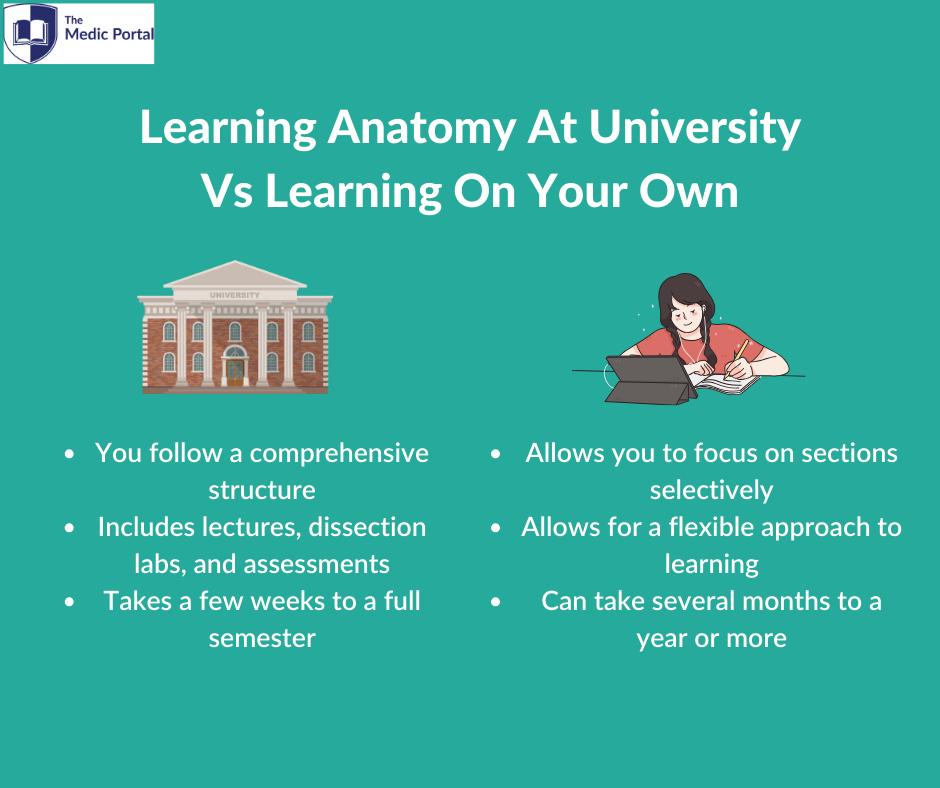Why Study Anatomy?
Studying anatomy is vital for medical students as it provides a solid foundation of medical knowledge, aids in clinical decision-making and enhances surgical proficiency. It is an essential component of becoming a competent and skilled healthcare professional.
Anatomy forms the foundation of medical knowledge. It provides a deep understanding of the structure and organization of the human body, which is essential for comprehending the complex interactions between different body systems. Without a solid understanding of anatomy, it becomes challenging to diagnose and treat patients effectively.

Anatomy knowledge is directly applicable to clinical decision-making. By understanding the anatomical relationships between organs, tissues, and structures, medical students can interpret clinical findings, identify abnormalities, and make informed decisions regarding patient care. Anatomy knowledge helps in determining the most appropriate diagnostic tests, surgical approaches, and treatment plans.
Note that anatomy is not limited to medical school; it is a lifelong learning process for healthcare professionals. As medical knowledge evolves and new technologies emerge, staying updated with anatomical advancements is crucial. A solid understanding of anatomy allows medical students to adapt to new research, technologies, and medical practices throughout their careers.
How To Learn Anatomy?
One of the most effective ways to learn anatomy is through active learning and visualization techniques. Instead of passively reading textbooks or lecture notes, actively engage with the material. Use visual aids such as anatomical models, diagrams, and interactive apps to enhance your understanding.
Additionally, consider joining study groups or forming study partnerships to discuss and quiz each other on anatomical structures. By actively engaging with the material and visualizing the structures, you can enhance your retention and understanding of anatomy.
And remember: anatomy is best learned when you can apply it to real-life scenarios. Seek opportunities to apply your knowledge in practical settings. Consider volunteering or shadowing in healthcare settings where you can observe anatomical structures in action.
For example, observing surgeries or participating in clinical rotations can help you connect theoretical knowledge with real-life applications.
Additionally, practice identifying anatomical structures in radiographic images, such as X-rays or CT scans. This will help you develop a practical understanding of how anatomy is used in diagnosing and treating medical conditions.
By actively practicing and applying your knowledge, you can solidify your understanding of anatomy and its relevance in the healthcare field.

How Long Does It Take To Learn Anatomy?
In a formal academic setting, such as medical school or a related program, anatomy is typically taught over a dedicated period of time, ranging from a few weeks to a full semester.
If you are learning anatomy on your own, the time it takes can vary significantly. It depends on the amount of time you can dedicate to studying, your prior knowledge of biology and related subjects, and the resources you have access to. Self-study can take several months to a year or more, depending on the depth of knowledge you aim to achieve.
The time required to learn anatomy also depends on your specific learning goals.
For example, if you are studying anatomy for a specific purpose, such as preparing for a medical entrance exam or a career in healthcare, you may focus on key anatomical structures and systems relevant to that field. This targeted approach may require less time compared to a comprehensive study of the entire human body.
It’s important to note that learning anatomy is an ongoing process, even for professionals in the medical field. As new research and advancements occur, there is always more to learn and understand. Therefore, consider anatomy as a foundation that will continue to evolve and deepen throughout your career.

Tips For Learning Anatomy
1) Get to grips with the basics
Learning anatomy can be a daunting experience for everyone. Often, it takes a while to get used to how anatomy is taught, and how to adapt your own learning style to suit this.
Anatomy at Medical School will be unlike any other subject you’ve been taught at school. It can be useful to learn some of the basic anatomy terms prior to your first anatomy session.
Ever heard of the word ‘fascia’? No? Well don’t worry! There is a whole new anatomy language you’ll learn once you start your course. This blog is here to help you to approach your first session with confidence, and to make sure you aren’t bowled over by the barrage of strange new words!
2) Make the most of dissection sessions and anatomy tutorials
If your university offers tutorials or cadaver dissection, it can help tremendously if you’ve prepared for these beforehand. It is useful to learn the names of structures within the section of the body you are going to learn in the lesson.
For example, if you are studying the heart, recap the different chambers, valves and vessels. Preparing for each session will allow you to gain the most out of the anatomy class. It also will give you an opportunity to test your understanding, and give you the chance to ask questions about things you are unsure of.
3) Learn to speak the “anatomy language”
A vast number of the terms used in anatomy will be unfamiliar to those who have not previously learnt the subject. One of the ways to keep up to date with different words is to keep a glossary every time you learn a new one. This can be updated after each session! Often the same language is used for different parts of the body, therefore learning these general terms can really benefit the overall anatomy experience.
4) Study in groups
It can help to form a group with fellow students who you work well with (often called ‘friends’). Try to meet with your study group/friends regularly to recap information learnt after each session. You can then quiz each other and go over any anatomy concepts that you misunderstood (there’ll be plenty of these). This will also help you to prepare for future dissection sessions whilst also ensuring you revise the content as you go along.
5) Link structure to function
Often the function of an organ will be known before the anatomy is learnt. For example, many students learn about the kidney during their A levels but do not learn the detailed anatomy. A way to aid learning is to link the structures seen in the body to their function. Linking concepts that are learnt often helps with retaining new information.
6) Learn in sections
Learning the whole anatomy of the human body in one go would be extremely difficult. It helps to break the human body into sections and then to link the sections together at a later date. This will help you to learn the specific sections in enough detail. It can also prevent anatomy from becoming overwhelming.
7) Utilise a variety of methods
Every student has a different way of learning. Those who are visual learners might like to use an anatomy colouring book to recap the structures. For those who prefer active learning I would recommend Kenhub, an online software that has quizzes of anatomical structures as well as other learning resources. For learners that enjoy watching videos to revise, Acland’s Anatomy is a good resource that uses cadavers with directed learning.
8) Practice using real images
Often anatomy exams will be based on “spotters”. This involves different structures of the body being pointed to, which you then name. These are more than often based on cadavers. Due to this, although it can help learning from cartoon based pictures, it is best to use images from cadavers to be sure that you can identify them correctly in spotter exams.
